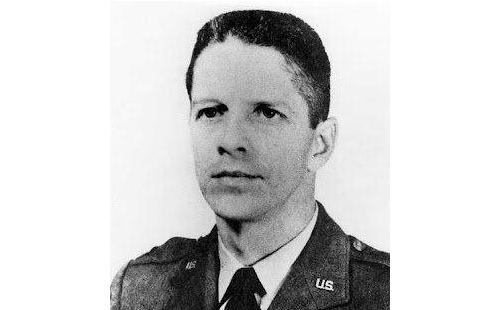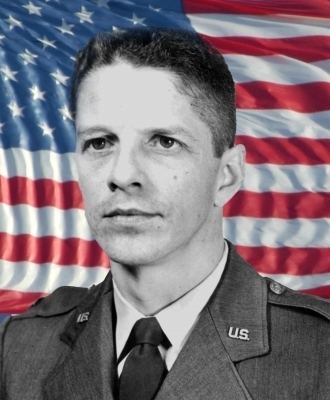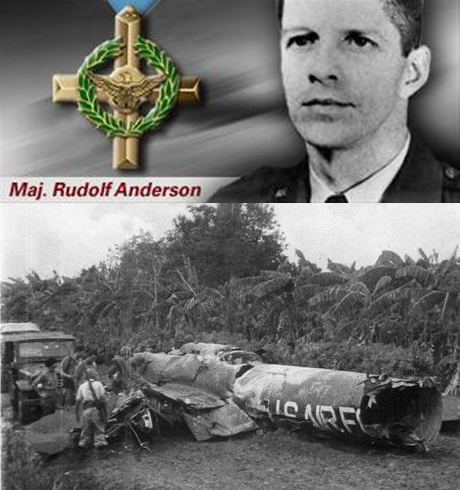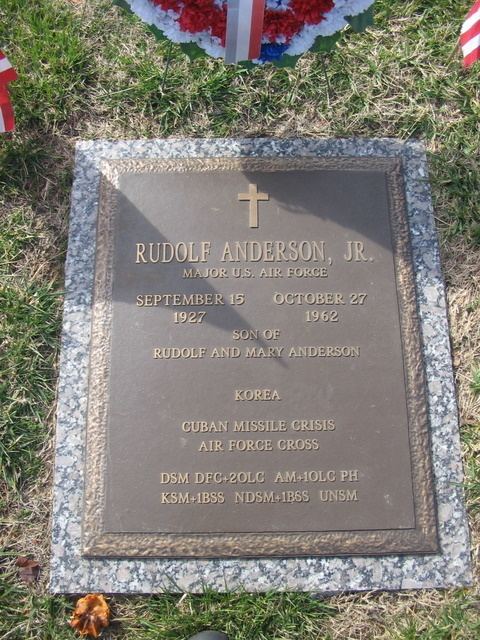Allegiance United States Name Rudolf Anderson | Years of service 1948–1962 | |
 | ||
Born September 15, 1927Greenville, South Carolina ( 1927-09-15 ) Battles/wars Korean WarCuban Missile Crisis Awards Air Force CrossAir Force Distinguished Service MedalDistinguished Flying Cross (2)Purple HeartCheney Award Place of burial Greenville, South Carolina, United States Similar People John F Kennedy, Robert F Kennedy, Roger Donaldson, Philip D Zelikow, Ernest May | ||
Dedication of major rudolf anderson jr memorial
Rudolf Anderson Jr. (September 15, 1927 – October 27, 1962), was a pilot and commissioned officer in the United States Air Force and the first recipient of the Air Force Cross, the U.S. Air Force's second-highest award for heroism. The only person killed by enemy fire during the Cuban Missile Crisis, Anderson died when his U-2 spy aircraft was shot down over Cuba.
Contents
- Dedication of major rudolf anderson jr memorial
- Rudolf Anderson Hall of Fame
- Life
- Cuban Missile Crisis
- Awards and decorations
- Air Force Cross citation
- After his death
- Wreckage
- Popular culture
- References

Rudolf Anderson Hall of Fame
Life

Anderson was born September 15, 1927, in Greenville, South Carolina. He earned the rank of Eagle Scout from Greenville's Boy Scout Troop 19, graduated from Greenville High School and from Clemson University as a member of Air Force ROTC Detachment 770, in 1948. Commissioned as a Second Lieutenant, he completed Primary and Advanced pilot training and received his U.S. Air Force aeronautical rating as a pilot. He began his operational career flying RF-86 Sabres and earned two Distinguished Flying Crosses for reconnaissance missions during the Korean War. After qualifying on the U-2 on September 3, 1957, "he became the 4080th Strategic Reconnaissance Wing's top U-2 pilot with over one thousand hours, making him a vital part of the United States' reconnaissance operation over Cuba in late October of 1962."
Cuban Missile Crisis

Originally flown by the CIA, the Lockheed U-2 high-altitude reconnaissance missions over Cuba were taken over by the Air Force on October 14, 1962, using CIA U-2 aircraft that were repainted with USAF insignia. Anderson was part of the 4028th Strategic Reconnaissance Weather Squadron, 4080th Strategic Reconnaissance Wing, headquartered at Laughlin Air Force Base, Texas. On October 15, when CIA analysts studied reconnaissance film from the first 4080th overflight, they found SS-4 medium-range ballistic missiles. These pictures triggered the Cuban Missile Crisis.

On October 27, Anderson took off in a U-2F (AF Serial Number 56-6676, former CIA Article 343) from a forward operating location at McCoy Air Force Base in Orlando, Florida. A few hours into his mission, he was shot down by a Soviet-supplied S-75 Dvina (NATO designation SA-2 Guideline) surface-to-air missile near Banes, Cuba. "The loss of the U-2 over Banes was probably caused by intercept by an SA-2 from the Banes site, or pilot hypoxia, with the former appearing more likely on the basis of present information," stated a CIA document dated 0200 hrs, October 28, 1962. Anderson was killed when shrapnel from the exploding proximity warhead punctured his pressure suit, causing it to decompress at high altitude.

On October 31, Acting United Nations Secretary U Thant returned from a visit with Premier Fidel Castro and announced that Anderson was dead.
By order of President John F. Kennedy, Anderson was posthumously awarded the first Air Force Cross, as well as the Air Force Distinguished Service Medal, the Purple Heart, and the Cheney Award. On July 26, 2011, Anderson was inducted into the Air Force Reserve Officer Training Corps Distinguished Alumni in a ceremony at Maxwell AFB, Alabama, officiated by Lieutenant General Allen G. Peck, Commander, Air University.
Although Anderson was the only combat death of the crisis, three reconnaissance-variant Boeing RB-47 Stratojets of the 55th Strategic Reconnaissance Wing crashed between September 27 and November 11, 1962, killing a total of 11 crewmembers. Seven more airmen died when a Boeing C-135B Stratolifter delivering ammunition to Naval Base Guantanamo Bay stalled and crashed on approach on October 23.
Awards and decorations
Anderson's awards and decorations include:
Air Force Cross citation
The President of the United States of America, authorized by Title 10, Section 8742, United States Code, takes pride in presenting the Air Force Cross (Posthumously) to Major Rudolf Anderson Jr., United States Air Force, for extraordinary heroism in connection with military operations against an armed enemy while serving as Pilot of a U-2 airplane with the 4080th Strategic Reconnaissance Wing, Strategic Air Command (SAC), from 15 October 1962 to 27 October 1962. During this period of great national crisis, Major Anderson, flying an unescorted, unarmed aircraft, lost his life while participating in one of several aerial reconnaissance missions over Cuba. While executing these aerial missions, Major Anderson made photographs which provided the United States government with conclusive evidence of the introduction of long-range offensive missiles into Cuba and which materially assisted our leaders in charting the nation's military and diplomatic course. Through his extraordinary heroism, superb airmanship, and aggressiveness in the face of the enemy, Major Anderson reflected the highest credit upon himself and the United States Air Force.
After his death
After the Cuban Missile Crisis ended, Anderson's body was returned to the United States and interred in Greenville on November 6, 1962 at Woodlawn Memorial Park.
A memorial to Anderson was erected in 1963 at Cleveland Park in Greenville. No surplus U-2 aircraft were available at the time, so an F-86 Sabre like the ones he flew in Korea was used instead: North American YF-86H-1-NA Sabre, AF Ser. No. 52-1976.
The memorial was redesigned, and it was rededicated on October 27, 2012, the 50th anniversary of Anderson's death.
The auditorium for the 47th Operations Group at Laughlin AFB, Texas, is named in his honor.
The Maj. Rudolf Anderson Jr. Squadron of the Arnold Air Society at Clemson University is named in his honor.
Wreckage
Some of the wreckage of Major Anderson's aircraft is on display in three museums in Cuba. One of the engine intakes is at the Museo de la Lucha contra Bandidos in Trinidad. The engine and portion of the tail assembly from the U-2 is at the Museum of the Revolution in Havana. The right wing, a portion of the tail assembly, and front landing gear are at the Fortaleza de San Carlos de la Cabaña, or La Cabaña, Havana. The two latter groups of parts were previously displayed at the Museo del Aire, Havana.
Popular culture
The shooting down of Anderson's U-2 reconnaissance flight over Cuba is featured in the 2000 film Thirteen Days; actor Chip Esten plays the role of Anderson. It's also referred to in the 1974 TV movie The Missiles of October and briefly mentioned in the movie Matinee (1993 film).
Quantum Leap featured a news bulletin covering the incident during the "Nuclear Family - October 26, 1962" episode (21) in Season 3.
The shooting of Anderson's U-2 is mentioned in Edge of Eternity by Ken Follett pages 308–310.
